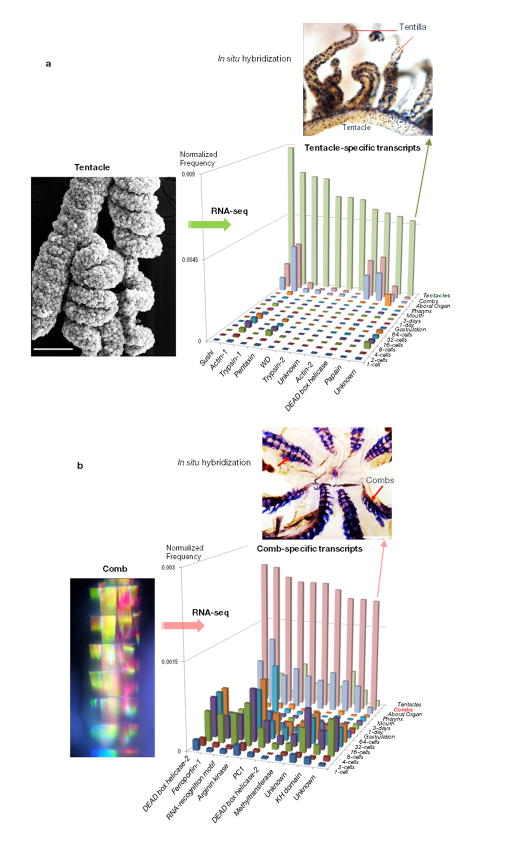Extended Data Figure 4.
a, Identification of tentacle-specific transcripts. The left photo shows scanning electron micrograph of a Pleurobrachia tentacle with two branching tentillae densely covered with hundreds of colloblasts or glue cells. Comparative transcriptome (RNA-seq) profiling among major organs allowed us to identify several dozen genes differentially or uniquely expressed in tentacles. The histogram shows illustrative examples of some of these genes with a normalized expression level (Y-axis) for each represented transcript. One of these Pleurobrachia-specific genes we named Tentillin (green arrow). In situ hybridization experiments (n=9) revealed a remarkable cell-specificity expression patterns for Tentillin in all main tentacle branches and tentillae, possible labeling colloblasts or associated secretory cells. b, Identification of comb-specific transcripts. The left photo shows a microscopic image of one comb row from an intact animal. The natural coloration is a reflection of the beautiful iridescence patterns produced from large cilia forming combs. Comparative transcriptome (RNA-seq) profiling among major organs allowed us to identify several hundreds of genes differentially or uniquely expressed in combs. The histogram shows illustrative examples of some of these genes with a normalized expression level (Y-axis) for each represented transcript (see Supplementary Methods S4.2.3.6, S4.2.3.7 and SM10, all sequences used in the analysis can be found in Supplementary Tables 29S, 30S and 32S).

